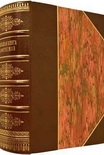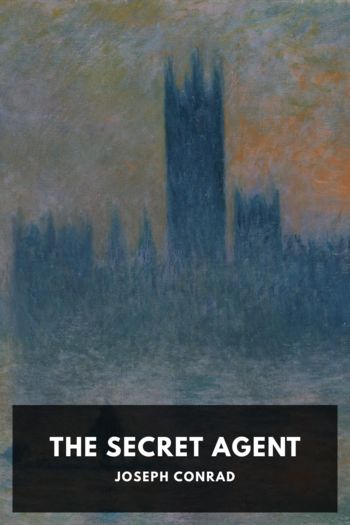Hidden History: Lost Civilizations, Secret Knowledge, and Ancient Mysteries, Brian Haughton [books you need to read .TXT] 📗

- Author: Brian Haughton
Book online «Hidden History: Lost Civilizations, Secret Knowledge, and Ancient Mysteries, Brian Haughton [books you need to read .TXT] 📗». Author Brian Haughton
the Nebra Sky Disc
©Landesamt fiirDenkmalpflege undArchaologie Sachsen-Anhalt (State Office for Heritage Management and Archaeology Saxony-Anhalt), Juraj Liptak.
The Nebra Sky Disc.
The Nebra Sky Disc is one of the most fascinating, and some would say controversial, archaeological finds of recent years. Dated to 1600 B.C., this bronze disc has a diameter of 32 centimeter (about the size of a vinyl LP) and weighs around 4 pounds. It is patinated blue-green and embossed with gold leaf
symbols, which appear to represent a crecent moon, the sun (or perhaps a full moon), stars, a curved gold band (interpreted as a sun boat), and a further gold band on the edge of the disc (which probably represent one of the horizons). Another gold band on the opposite side is missing.
The object was discovered in 1999 by treasure hunters using a metal detector at a prehistoric enclosure encircling the Mittelberg hill, near the town of Nebra in the Ziegelroda Forest, 112 miles southwest of Berlin, Germany. Unfortunately, the treasure hunters caused considerable damage to the disc during its crude removal from the ground, which included splintering its outer rim, losing one of the stars, and chipping a large piece off the gold disc. The looters subsequently attempted to sell the disc, along with two swords, two axes, a chisel, and fragments of armlets, to local archaeologists. But they discovered that, by law, the objects belonged to the state of Sachsen-Anhalt, where they were unearthed, so they could not be sold legally. In February 2003, they tried selling the disc to an antiquities collector in Switzerland for $400,000. However, the collector was actually working for the Swiss police as part of a sting operation to trap the group, which played out in the basement bar of the Hilton hotel in Basle. The group was subsequently arrested and the disc was recovered. It is now the property of the state of Sachsen-Anhalt.
The disc illustrates the crescent moon, a sun or full moon, three arcs, and 23 stars dotted around (apparently at random). There is a further cluster of seven stars, identified as the Pleiades constellation. X-rays have revealed two more stars underneath the gold of the right arc, suggesting that the two arcs were added later than the other features. The blue-green background of the night sky was once colored a deep violet-blue, apparently by applying rotten eggs, causing a chemical
reaction on the bronze surface. Running along the edge of the disc is a ring of holes punched through the metal, probably for attaching the disc to something, perhaps a piece of heavy cloth.
So what exactly is the Nebra Sky Disc and what was it used for? Many researchers believe it is the oldest known realistic representation of the cosmos yet found, perhaps a kind of astronomical calculation tool to determine planting and harvest times. For thousands of years, all across northern Europe, monuments were aligned to mark the summer and winter solstices: Stonehenge in England, and Newgrange in Ireland, are good examples. As Bronze Age people were an agricultural society, a method for finding out the time of year (and thus the correct times for planting and harvesting crops) was obviously vital. One way of doing this was to identify the position of the sun at sunrise and sunset. Intrigued by the possibility of the Nebra Disc as an astronomical device, Professor Wolfhard Schlosser of the University of Bochum measured the angle between the pair of arcs on either side of the disc, and found that it was 82 degrees. Fascinatingly, at Mittelberg hill, between the high midsummer sunset and the low midwinter sunset, the sun appears to travel around 82 degrees along the horizon. This angle would vary from place to place. Further north, for example, it would be 90 degrees, and to the south, 70. But in a restricted belt of central Europe, the suns passage across the sky measures precisely 82 degrees. Schlosser concluded that the pair of arcs along the circumference of the Nebra Disk did indeed depict the sun solstices accurately for its location. This would suggest that the Bronze Age agricultural societies of central Europe made sophisticated celestial measurements far earlier than has been suspected.
Some have pointed to the presence of the Pleiades star cluster on the disc as further evidence of Bronze Age astronomical knowledge. Although nowadays there are only six stars in the Pleiades visible to the naked eye, in the Bronze Age one of the stars may have been much brighter, thus accounting not only for the depiction of seven stars on the disc, but also for the ancient Greek name for the cluster: the Seven Sisters. The Pleiades was an important constellation for many ancient civilizations, including those of Mesopotamia and Greece. The constellation would have appeared in their





Comments (0)